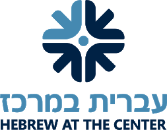Second Grade Space Exploration
January 25, 2018 by
To begin our study of space, second grade visited the Air and Space Museum to watch the IMAX film, Journey to Space. Students learned about the past, present and future of space exploration from the space shuttle program onwards. They were excited to learn about NASA’s upcoming mission to Mars and began wondering what humans may explore next in space.
Upon our return, second grade took a “deep dive” into learning about our solar system. Students researched the different tools humans currently use to explore space, including telescopes, rockets, space stations, satellites, and probes. After working together to learn about these tools from informational texts and videos, students became experts in another aspect of space, selecting a planet or another object (e.g. asteroids, comets, black holes) to research individually. Students used various written materials including books and articles to gather facts on post-its. Then they evaluated their facts and categorized them into not important, important, and very important. Simultaneously, in classrooms and in Science, second graders experimented with the scientific principles of rotation, orbit and tilt, gravity and atmosphere. Second graders also researched the parts of our solar system, including the characteristics of each planet. They learned about other space objects such as stars, moons, black holes, comets, asteroids, and meteoroids.
Next, students began to grapple with our essential question: What should the future of space exploration be? Students first independently applied their knowledge to brainstorm an answer to this question. Based on their responses, students were split into teams with others who shared a similar vision. Together, they refined their reasoning for selecting their destination, which informed their decision on what tool to build. Using the research they had gathered in advance, students discussed the potential difficulties of their missions. Each mission presented its own challenges, and students utilized their problem-solving skills to find solutions. For example, if traveling past the asteroid belt to the outer planets, the team found ways to avoid damage to their spacecraft. Then, students created a list of the parts and purposes for each part of their spacecraft.
Second Graders used the Design Thinking model as they began conceptualizing and then constructing their spacecraft prototypes. After a “deep dive” into learning about the people (astronauts) and the places (the specific destinations) they were designed for, they were able to empathize when thinking about the design needs of their creations and focus on and define the distinct point of view necessary to develop an appropriate spacecraft for their destination and mission. Having a solid foundation on which to begin creatively problem-solving, the students began to ideate. They brainstormed as many possible ideas as they could generate and shared them with one another using a “Yes, and” protocol, in which all ideas were heard and received by the group, encouraging students to build off of one another’s contributions.
With positive energy and collaborative creativity flowing, the teams needed to make informed decisions as they narrowed down their ideas and began planning for their prototypes. The students used their listening skills and compromised. While this aspect of the process was challenging for some, when they began to construct their prototypes most students agreed that it was more successful because of the work they had done focusing their ideas.
Afterward, the students collected all sorts of materials, including cardboard and foam tubing, plastic and cardboard cylinders, plastic cups of all shapes and sizes, and aluminum foil. Next, they began assembling their prototypes. As they were constructing, students continued to apply all the research and expertise they had developed on the destination they had selected and the needs of astronauts, thinking about what components they should include in their space tool, how it would be powered, and so much more.
Second graders also explored the beauty of space. They composed poems about different space objects that allowed the readers to experience the topic and its splendor rather than just learn facts about it (as we do from informational texts). Through this endeavor, the students learned about and experimented with another important facet of “Voice” (our overarching theme for the year) and of the splendor of space.
We are excited to share our learning at the second and third grade STEM Night on February 1!






